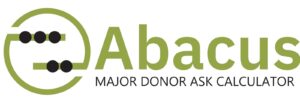Opportunity is everywhere, and not just strictly in the form of donors and dollars. Sometimes it wears a mask, and it hides in plain sight. But most development professionals have the innate skills to find it, learn from it, and use it to help with future challenges. Here are two examples of what I mean.
1. Fill in the gaps.
I recently had the pleasure of attending my region’s Association of Fundraising Professionals (AFP) “meet the funders” breakfast. At this event, which Copley Raff helps to sponsor, advancement officers have the opportunity to meet with foundation and corporate funders in a networking setting and speak face to face.
So where’s the opportunity here?
Believe it or not, it is not finding fast and easy money, nor is it collecting basic information which is all well documented on the funder’s websites. The real score here is the chance to ask key funders about less obvious matters that could bear fruit in the long run. Questions like:
- What is an example of a risky grant the foundation has made and what made it riskier than others?
- How much influence does staff have in the grant committee outcome?
- Of those full proposals invited from a letter of inquiry, what percentage is typically approved?
Of course, it is also well advised to develop rapport with the program officer as well in situations like this. A simple question like “where did you work before this current position?” can reveal much about their interests and priorities, as well as form the kernel of a relationship that may be called upon in the future.
2. Learn from all sides.
As the President of the Friday Forum, an organization dedicated to offering thought leadership presentations to senior development officers, I am involved with selecting the speakers for our quarterly meetings. Our largest turnouts occur when funders are featured or are part of a panel. In contrast, our seats are only half full when we have thought leaders in ancillary professions that affect the philanthropic landscape and donor attitudes.
Where’s the opportunity here?
As it takes a village to raise a child, it takes the ability to have a circumspect perspective of the philanthropic world to be solid fundraiser. Every person that you meet provides the opportunity for learning. Consider each interaction or story exchanged another piece of hardware in your informational and experiential toolbox. You never know when you may need a hammer or file to close your next gift! Clearly, the best advancement professionals are those with a broad scope of interests, intellectually curious, and able to connect disparate dots to make for enjoyable and memorable encounters with donors and others.
Your takes:
- When you have a rare chance to chat with a funder, use the opportunity to uncover strategic and helpful information that is not usually available on their website.
- Plant the seeds of a future relationship with a program officer by asking about their professional history, interests, and roles in their organization.
- Keep abreast of surrounding issues that can affect the philanthropy landscape: for example, learning about trends in social impact philanthropy, what makes different types of philanthropist give, and the happenings on Capitol Hill will pay far more dividends than the off chance of having a meaningful encounter with a foundation officer at an event.
For more information about Copley Raff and its spectrum of not for profit consulting services, please see www.copleyraff.com.
Have a development, executive recruitment, or campaign strategy or management challenge? Let’s talk! Click here to connect with Rebekah Kaufman, Director of Consulting Services at CRI.


